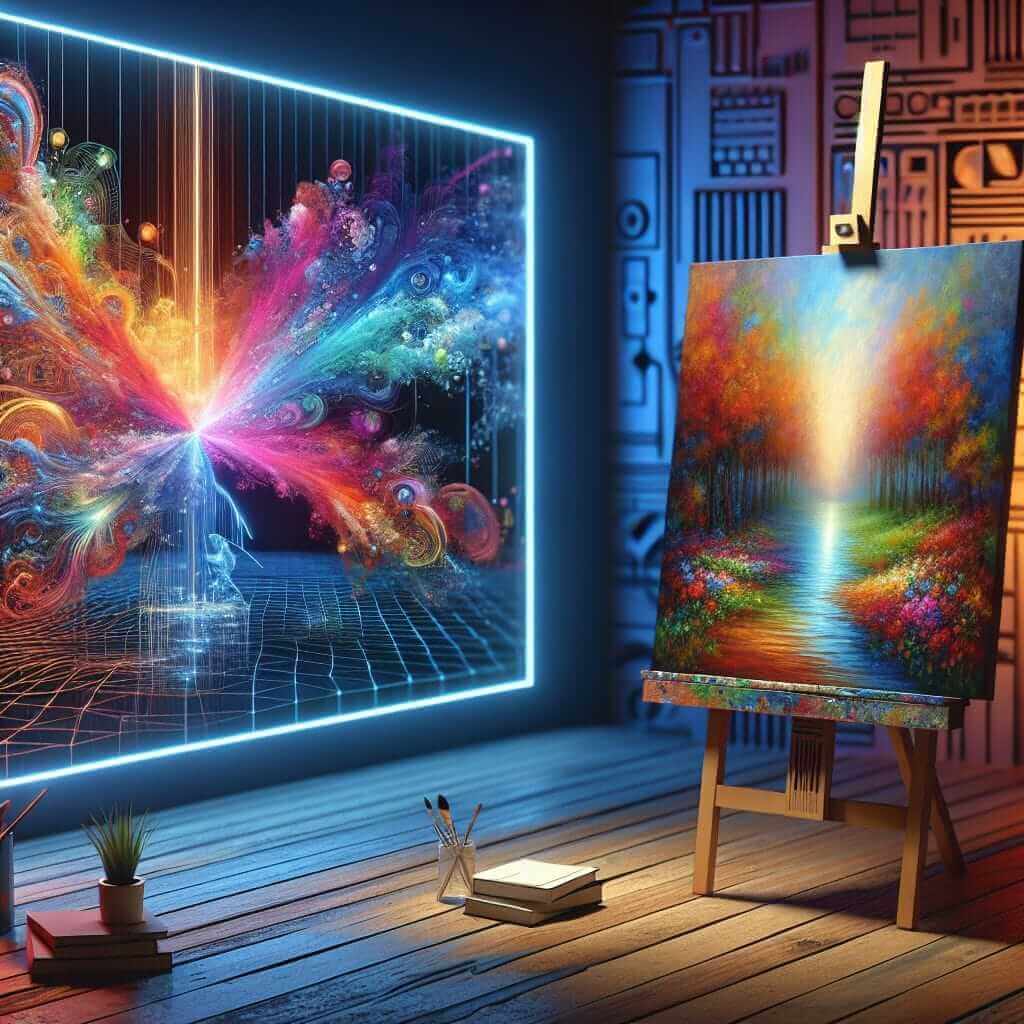The intersection of art and technology is a hot topic in today’s digitally driven world, making it a frequent theme in IELTS Writing Task 2. This essay will delve into the influence of digital technology on art, providing a comprehensive guide to help you excel in your IELTS exam. We’ll analyze a sample question, craft a band 8 response, and highlight key vocabulary and writing strategies.
Sample IELTS Writing Task 2 Questions
Here are some potential essay questions related to the influence of digital technology on art:
- Some people believe that digital technology has made art more accessible, while others argue that it has diminished the value of traditional art forms. Discuss both views and give your own opinion.
- Digital technology has revolutionized the way art is created, experienced, and shared. To what extent do you agree or disagree?
- Analyze the positive and negative impacts of digital technology on the art world.
Sample Essay Analysis & Response
Let’s choose the first question for our sample essay:
Some people believe that digital technology has made art more accessible, while others argue that it has diminished the value of traditional art forms. Discuss both views and give your own opinion.
This question requires us to present a balanced discussion, considering both the democratizing effect of digital technology on art and the concerns surrounding the devaluation of traditional art forms.
Band 8 Sample Essay:
Digital technology has profoundly impacted the art world, sparking debate about its influence on both accessibility and the value of art. While some argue that it has democratized art and made it more readily available, others contend that it undermines traditional art forms. This essay will explore both perspectives before presenting my own viewpoint.
On the one hand, digital technology has undeniably made art more accessible. The internet and social media platforms have transformed how art is shared, experienced, and consumed. Artists can now bypass traditional gatekeepers, such as galleries and museums, and connect directly with a global audience. Online platforms offer virtual tours of museums, digital exhibitions, and tutorials, allowing anyone with an internet connection to engage with art from around the world. This accessibility has democratized art appreciation and fostered a more inclusive art world.
On the other hand, the proliferation of digital art has led some to argue that it diminishes the value of traditional art forms. The ease with which digital art can be created, copied, and disseminated raises concerns about authenticity and originality. Furthermore, the tactile experience of viewing a physical artwork in person, appreciating its texture and brushstrokes, is lost in the digital realm. Critics argue that this shift towards digital art may lead to a devaluation of the skill, craftsmanship, and historical significance embedded within traditional art forms.

In my opinion, digital technology has brought about both positive and negative changes to the art world. While its democratizing effect is undeniable, it is crucial to acknowledge the concerns surrounding the devaluation of traditional art. It is not a matter of choosing one over the other; rather, it is about finding a balance where digital technology complements and enhances our appreciation of art in all its forms. Fostering digital literacy and critical thinking skills is essential to navigate this evolving landscape and ensure the continued appreciation and preservation of both traditional and digital art.
Word count: 325 words
Writing Tips:
- Structure: Follow a clear structure – introduction, body paragraphs (presenting both sides of the argument), and a conclusion stating your opinion.
- Cohesion & Coherence: Use linking words and phrases to ensure your essay flows smoothly and logically.
- Vocabulary: Utilize a wide range of vocabulary related to art and technology. Avoid repetition and aim for precision in your word choice.
- Grammar & Accuracy: Pay attention to grammar rules, sentence structure, and punctuation. Errors in these areas can lower your score.
Key Vocabulary:
- Democratize (verb) /dɪˈmɒkrətaɪz/: To make something accessible to everyone.
- Gatekeepers (noun) /ˈɡeɪtˌkiːpəz/: People or organizations that control access to something.
- Proliferation (noun) /prəˌlɪfəˈreɪʃn/: Rapid increase in the number or amount of something.
- Disseminated (verb) /dɪˈsemɪneɪtɪd/: Spread widely.
- Tactile (adjective) /ˈtæktaɪl/: Relating to the sense of touch.
Conclusion
The influence of digital technology on art is a complex and multifaceted topic. By understanding the arguments surrounding accessibility, value, and the evolving nature of art itself, you can craft well-informed and insightful essays for your IELTS Writing Task 2. Remember to practice your writing skills, expand your vocabulary, and stay informed about current trends in both art and technology.